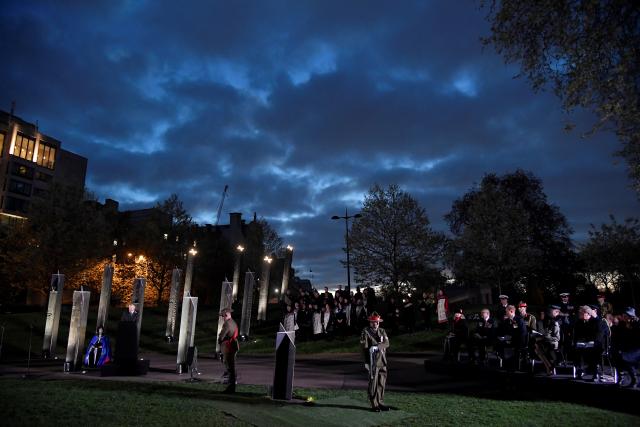On April 25, 1915, thousands of troops from the Australian and New Zealand Army Corps (ANZAC) landed on the Gallipoli peninsula in Turkey, where they fought under their own flags for the first time.
The date is seared into the national consciousness as a point where the two nations emerged from the shadow of the British empire, and has become a solemn anniversary to remember troops from both countries who served and died in all wars.
An estimated 44,000 Allied soldiers were killed in the Gallipoli campaign, according to the Australian War Memorial.
At the Australian War Memorial in Canberra, World War One soldiers were honored with excerpts from their diaries, read before the dawn service, to commemorate 100 years since the last battles before the Armistice was declared in November 1918.
In France, Australian Prime Minister Malcolm Turnbull took part in a dawn service to mark the Battle of Villers-Bretonneux in World War One. Some 2,400 Australians died in the overnight battle on April 24, 1918, to retake the town from German forces.
“We particularly remember those who lost their lives or came home wounded, and we acknowledge the hardship and pain borne by their families and loved ones,” Turnbull said in a video message posted on Facebook.
World War Two veterans, some of them former prisoners of war (POWs), gathered in Thailand’s western province of Kanchanaburi to remember the thousands of POWs and Asian laborers who died when Japanese occupying forces put them to work on the infamous “death railway”, a supply route to Japanese troops in the then Burma, now Myanmar.
“I get quite emotional at the dawn service as dawn is breaking. I think of all of the friends, and my mates, as we call them, that were left on the railway,” said Australian Neil McPherson, 96, a former POW.
Harold Martin, aged 101, said: “I’d like to say a word for the ordinary soldiers that were up there because there were a lot of heroes that were never mentioned.”
More about: #ANZAC
















































